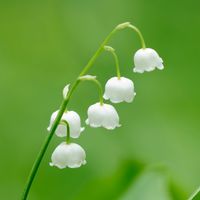Grass Seed Vs. Sod: Reasons To Seed Your Lawn Or Use Sod Instead

A lawn is a very important part of a home's curb appeal. Revitalizing an existing lawn or developing new ones requires an important decision - should you seed it or sod it? Here we will explore both sides, reviewing the benefits of sod lawns as well as reasons to seed your lawn.
Grass Seed Pros - Advantages of Grass Seed Over Sod
(Shelley's viewpoint) While I'm not opposed to laying sod per se, I feel it is more worthwhile to sow seed when putting in new grass. So, when it comes to sod, tell it to sod off! These are my reasons why:
It's cheaper. If you were to calculate the cost of seeding your lawn versus sodding, you would discover that the cost of seeding was far less. This is one of the biggest grass seed pros. In fact, many sources suggest that the cost of sodding could be as high as 10-20 times more than seeding. Depending on the size lawn, grass type, and whether or not you are enlisting professional services, this could mean the difference of several thousand dollars saved by choosing grass seed over sod.
More choices. When you take into account the number of seed varieties available as opposed to sod, there simply are more choices with seed. Having more choices means that you can identify a grass variety that is better suited for your climate, soil and lighting conditions. It also increases your access to varieties that have better resistance to drought, pestilence and disease. This, in turn, leads to better performance and less maintenance for you.
Easy to install. Seed is considered to be less-labor intensive to install than sod. The use of a spreader can help you disperse grass seed easily, quickly and uniformly on top of prepared soil. Sod, on the other hand, can be much more cumbersome to work with when you consider that sod rolls are heavy (approx. 30-40 pounds each), so those with achy backs or bad knees need not apply. Installing sod is also somewhat akin to putting together a jigsaw puzzle - you will be laying and trimming sod as you go along, ensuring that the pieces fit good together and aligning with the borders and contours of your yard. So, in other words, be prepared to work a bit harder installing sod than you do with seed!
Stronger root system development. Sod rolls have roots that have been severed. The roots, as a result, are short, shallow and limited, which may make the establishment of roots in your location a bit of a challenge. Grass seed, in contrast, grows undisturbed from where it was sown, developing a stronger and deeper root system from the outset, and over the long term, results in a thicker, low-maintenance lawn. Deeper roots reach more water tables, enabling the grass to endure drought easier. Deeper roots will also have improved nutrient uptake, reducing the need for fertilizer.
Cons - Why Sod is Better Than Grass Seed
(Darcy's viewpoint) With our hectic, busy lifestyles, we barely have time in the garden to stop and smell the roses, let alone stop and watch the seed grow. One of the leading reasons why sod is better than grass seed is because it provides us with an instant lawn and instant gratification. It can take all season or even several seasons to get a thick, lush lawn from grass seeds, but sod takes root in only a couple, short weeks. What other advantages of sod are there?
Sign up for the Gardening Know How newsletter today and receive a free copy of our e-book "How to Grow Delicious Tomatoes".
No protection needed. Seeding the lawn requires barricading the area off and covering it to protect the seed and fragile little seedlings from birds, animals, foot traffic and runoff. Sod, however, can be walked on almost immediately after it is laid, and you don't have to worry about losing seed to hungry wildlife or the elements.
You can lay sod anytime. Speaking of time, our garden chore lists are already extremely long from spring through autumn, but for best germination rates, lawns should be seeded only in spring or fall. Sod, on the other hand, can be laid or patched any time of the year, as long as it can be watered regularly and has adequate time to root before winter freeze.
It's great for difficult sites. Sod can also be used in difficult areas, such as slopes, where seed would just wash away every time it rains. On slopes, sod just needs to be staked down until it takes root.
Low maintenance. Though it is essential that sod be watered regularly and thoroughly its first growing season, it does not require any fertilizer applications in the first year. The only maintenance requirements besides watering is mowing, which can be done within weeks of laying sod.
Locally sourced. Another benefit to sod is that it is usually locally sourced, which not only helps support local sod farmers, but also prevents transplant shock and other problems that may occur from plants not acclimated to your specific climate.
Weighing the Benefits of Sod Lawns Over Seeding
When it comes to grass seed over sod, sometimes it's better to have a seedy disposition. There are many reasons to seed your lawn. Seeding your lawn is cheaper, offers more selection for grass variety, is easier to install and has the potential to produce a healthier lawn. On the other hand, if you're not a patient person and need instant gratification, or if you just want something low maintenance that can be done at nay time, you may want to stick with installing a sod lawn.

Shelley Pierce was a writer for Gardening Know How, contributing to hundreds of articles for the site.